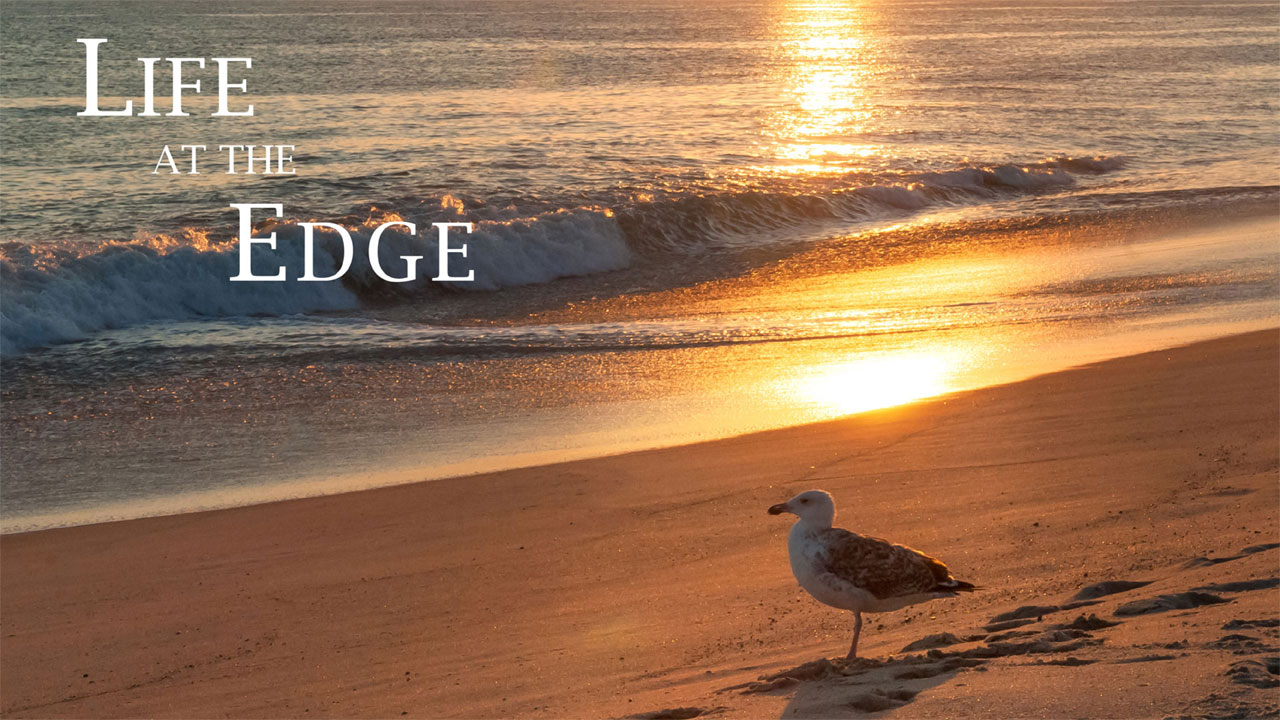The Lure of the Ocean’s Bounty
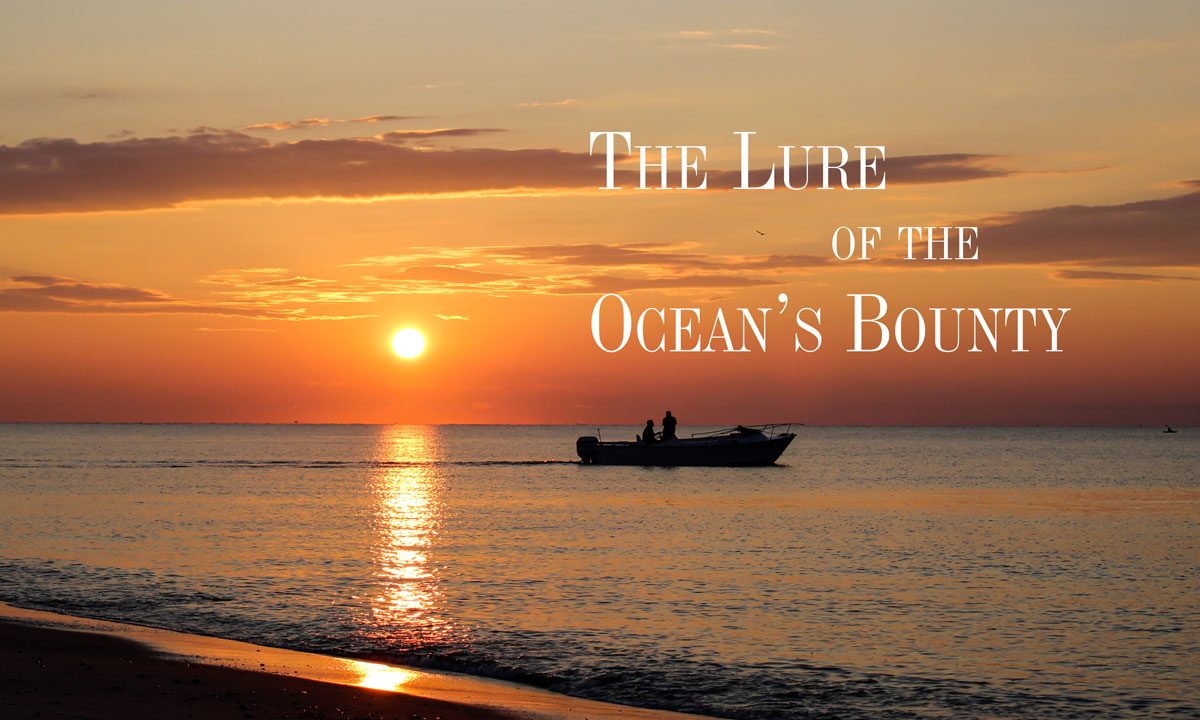
by Andrew Spencer
The fishing on Nantucket is spectacular, whether it’s stalking stripers in the spring and fall, chasing marauding packs of bluefish in the summer, or enticing wary bonito and false albacore in the rips, there is something here for every angler.
Our waters even offer the chance to target giant bluefin tuna or other offshore species. But then, just like the summer itself, it seems like the fish are gone. The water temperature drops, the fish migrate, and the island’s anglers are left to tell stories—some based in fact, others not so much—until the warmer temperatures return, and we can start it all over again.
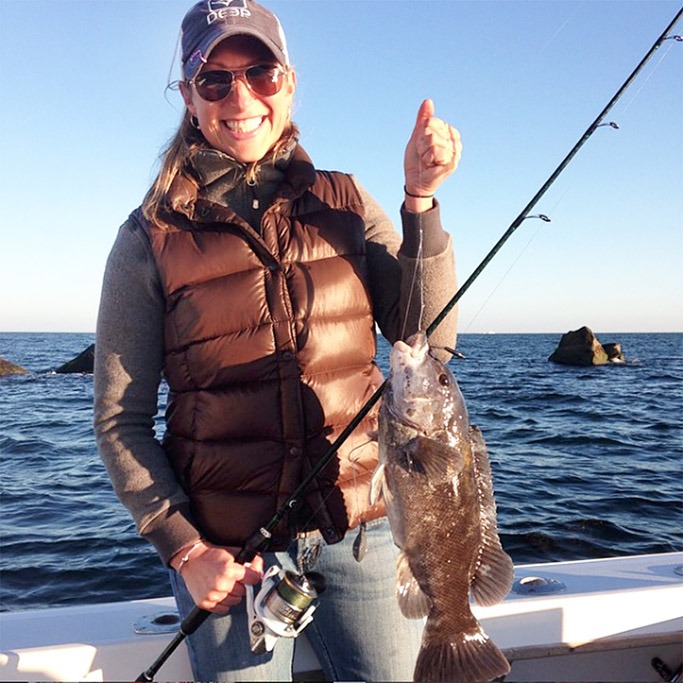
For those itching to be on the water, so they can wet a line during these cooler months, fear not! There are still plenty of opportunities that abound. It might not offer quite the pulse-racing thrill of seeing the water explode as a hungry bluefish engulfs a topwater plug, but for those who are true anglers, there is still plenty of excitement to be had. For the rod-and-reel set, island ponds can provide endless hours of fishing for various freshwater species.
On the eastern end of the island, Gibbs Pond near Altar Rock is one of the
island’s kettle ponds—ponds resulting from the depressions left by retreating glaciers—and is also home to a healthy population of white and yellow perch, as well as smallmouth bass and both chain pickerel and pike. Sesachacha Pond on the island’s eastern edge is a small pond that is periodically opened to the nearby ocean in order to cleanse the ecosystem. The fishing on Nantucket is spectacular, and because of that, it is not uncommon to find landlocked bluefish and striped bass, along with blueback herring, white perch, and other species of fish.
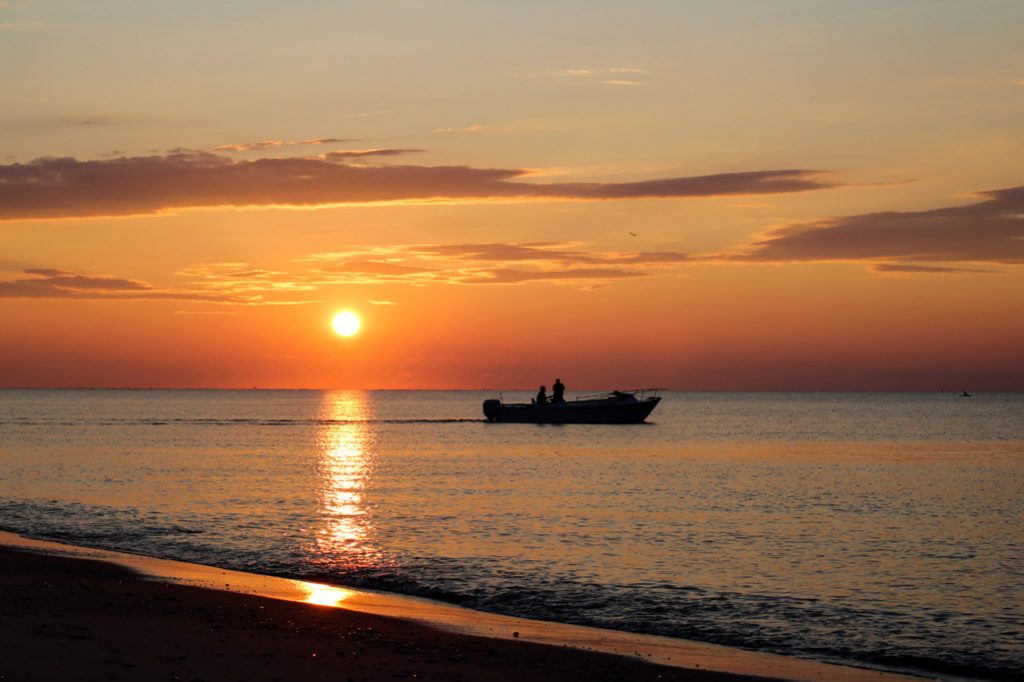
Heading out west, anglers have their choice of multiple ponds from which to choose. Hummock Pond stretches for over a mile and provides anglers with the chance to sunfish, crappie, American eels, and smallmouth bass. For those seeking largemouth bass, in addition to smallmouth bass and sunfish, Long Pond is a great spot to hit. Miacomet Pond is another local favorite, offering anglers the chance to catch virtually any freshwater species of fish.
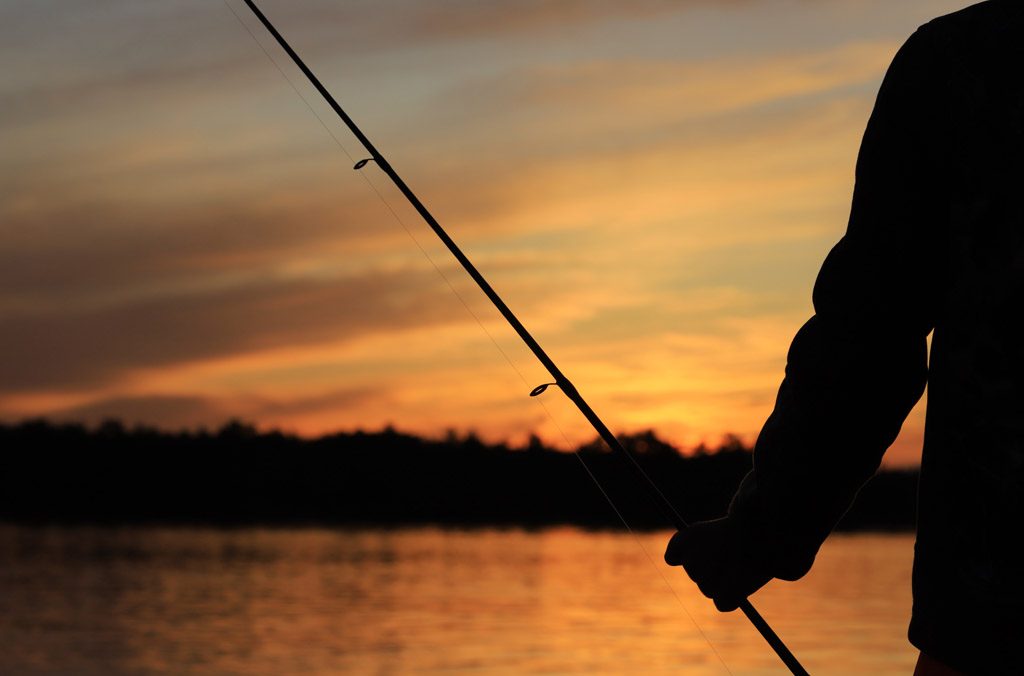
One of the great things about fishing ponds—especially at this time of year—is that there is usually very limited fishing activity, meaning more often than not you’ve got your pick of spots and the whole pond to yourself. So grab a rod-and-reel and head out to a local pond to test your luck and hone your fishing skills. But what about those days when the fish just aren’t biting? You can only sit on the side of a pond and cast a lure for so long before even the most patient amongst us gets bored. What then?
Fortunately for those of us who consider ourselves attention span-challenged, Nantucket has a veritable gold mine on the water that is just waiting for us to come avail ourselves of the treasure within. That gold mine is better known locally as the Nantucket bay scallop population, and the culinary rewards for those who seek that gold are unbelievable. And they can be harvested with a minimum of equipment, as long as you have the requisite license and you obey the law limiting scalloping to Wednesday – Sunday in the season.
For the uninitiated amongst us, fishing for bay scallops on Nantucket typically takes one of two forms. The most common method for harvesting scallops is via pushrake, a rectangular net attached to the end of a long wooden pole. The net portion of the rake is pushed along the sea floor, while the scalloper trails a basket floating in an inner tube. After a period of pushing, the rake is lifted and its content sorted, legal-sized scallops (those with an easily identifiable and clear raised growth ring) are transferred to the basket and everything else is returned to the sea. The other technique employed by many a Nantucketer is either snorkeling or scuba diving, picking up scallops directly from the bottom and putting them in a net bag.
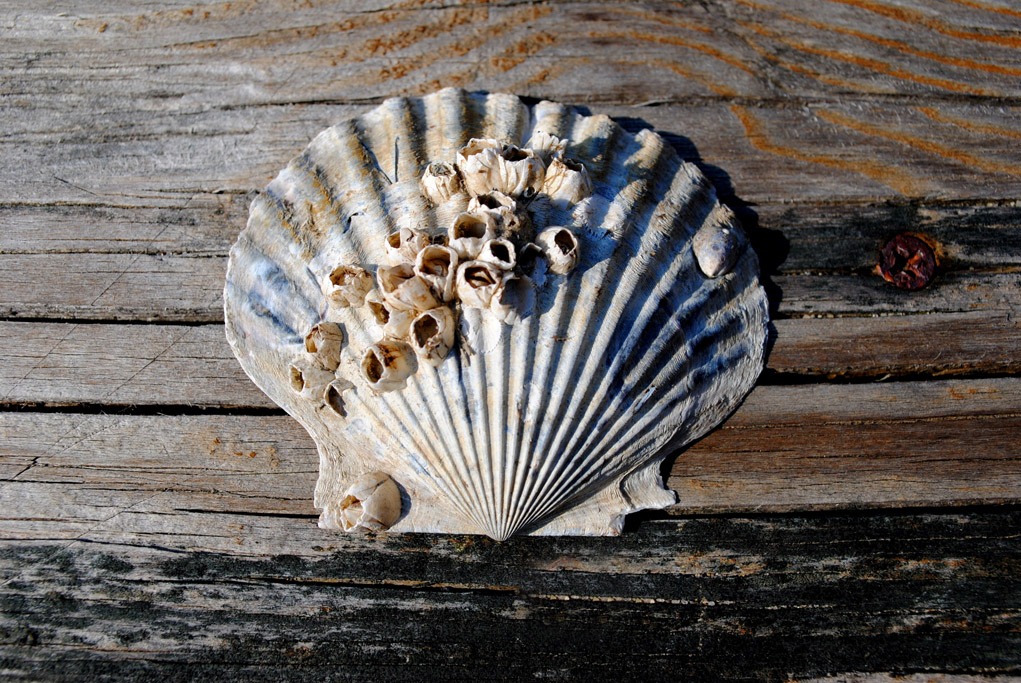
Regardless of what technique you choose to employ, there are a few locations that are less-than-secret hotspots. Madaket and Polpis Harbors are both favorite spots for local scallopers, as are the shallows off of Monomoy. The preferred strategy for pushraking is to go during low tide (while wearing chest waders), so as to allow scallopers to get as far from shore as possible before they’re in water that is too deep to safely wade through. For those employing either a snorkel or a scuba tank, depth is less of an issue, so either tide tends to be equal in terms of timing. Also, remember that there is a strict limit of scallops, with an individual legally allowed to harvest one bushel (easily measured by the size of your basket) of scallops per week during the season.
And while the fishing on Nantucket is spectacular, the work involved in harvesting your own scallops can be intimidating, but the rewards, as I said before, are incredible. There are few—if any—foods in the world that can compare to a freshly-harvested Nantucket bay scallop. Lightly sautéed in garlic butter, served cold as ceviche, or even just eaten raw out of the shell, it’s literally impossible to go wrong with those little pieces of Nantucket gold!
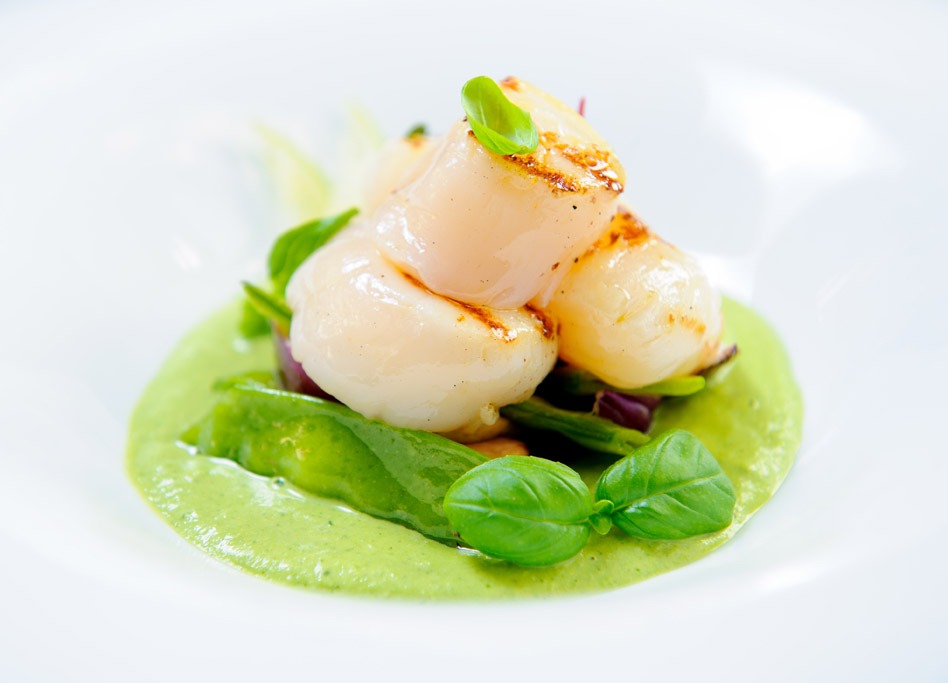
Now get out there and get fishing!
License restrictions apply to those seeking to harvest Nantucket bay scallops. Information regarding fees and licenses may be found at the Nantucket Marine Department, located at 34 Washington Street, 508-228-7260. No fishing license is required to fish in Nantucket ponds.

